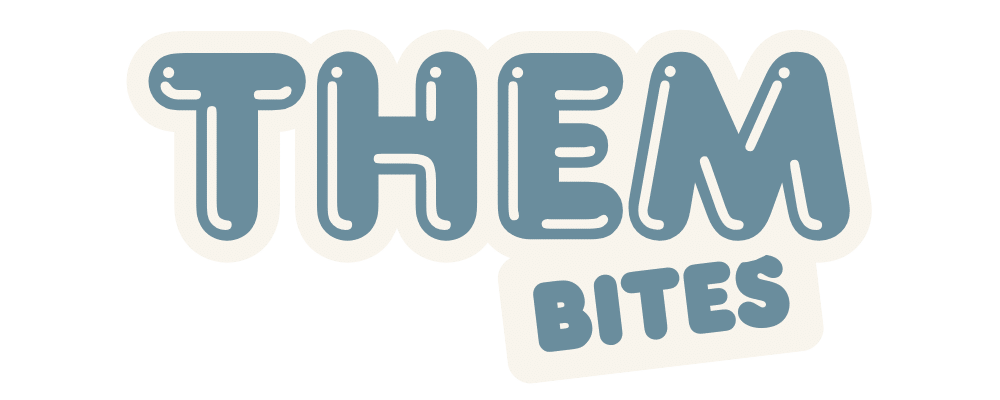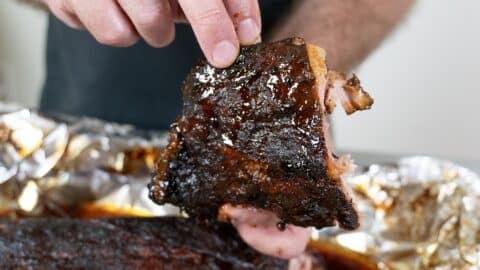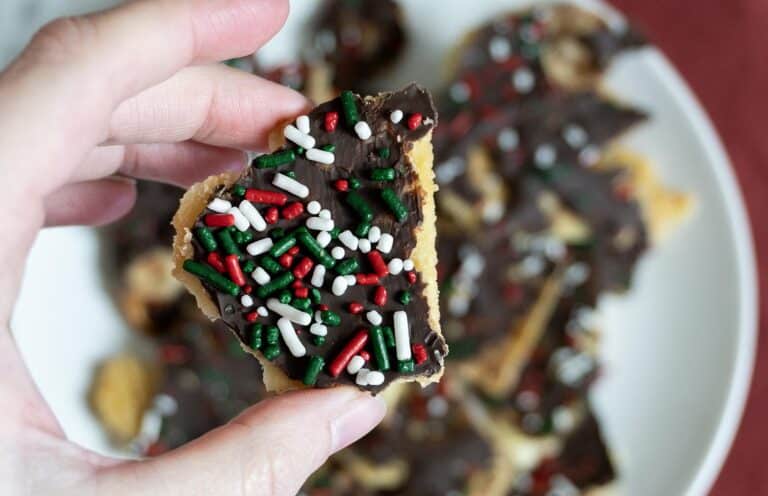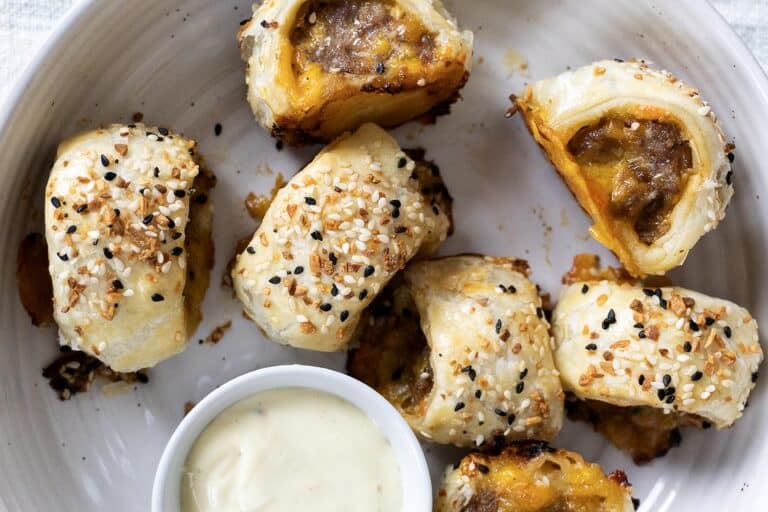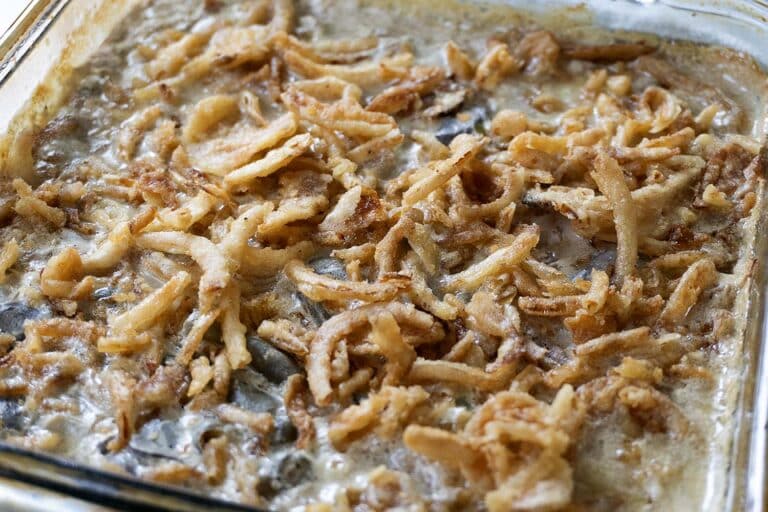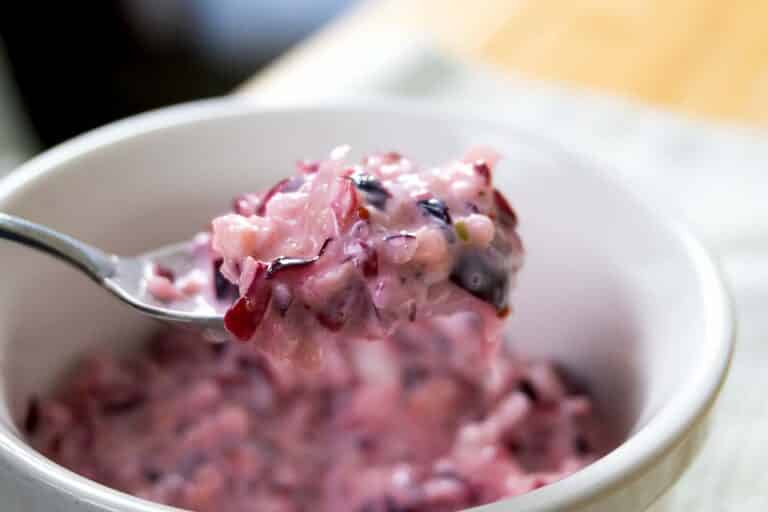321 Baby Back Ribs
321 baby back ribs are an easy, repeatable way to smoke ribs that turn out tender and saucy.
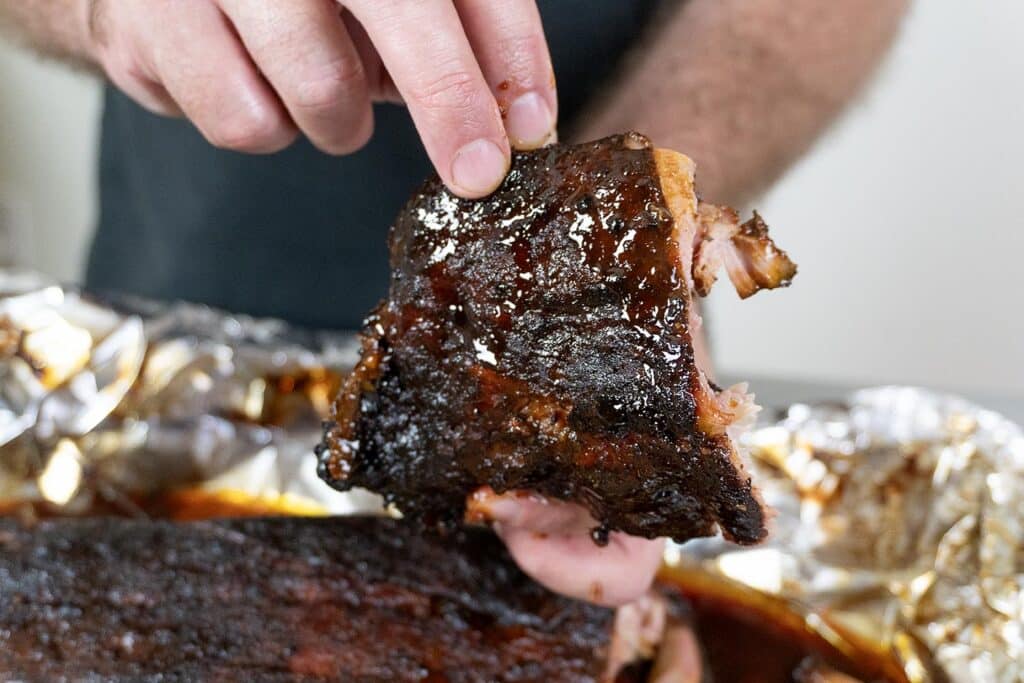
This method uses apple wood chunks for a gentle kiss of smoke, starts with removing the membrane on the back of the rack, and uses yellow mustard as a binder so your dry seasonings stick evenly.
What Temperature Do You Cook Ribs At 321?
The classic 3–2–1 schedule is three hours unwrapped, two hours wrapped, one final hour unwrapped. Most pitmasters run the entire cook at 225°F for steady results.
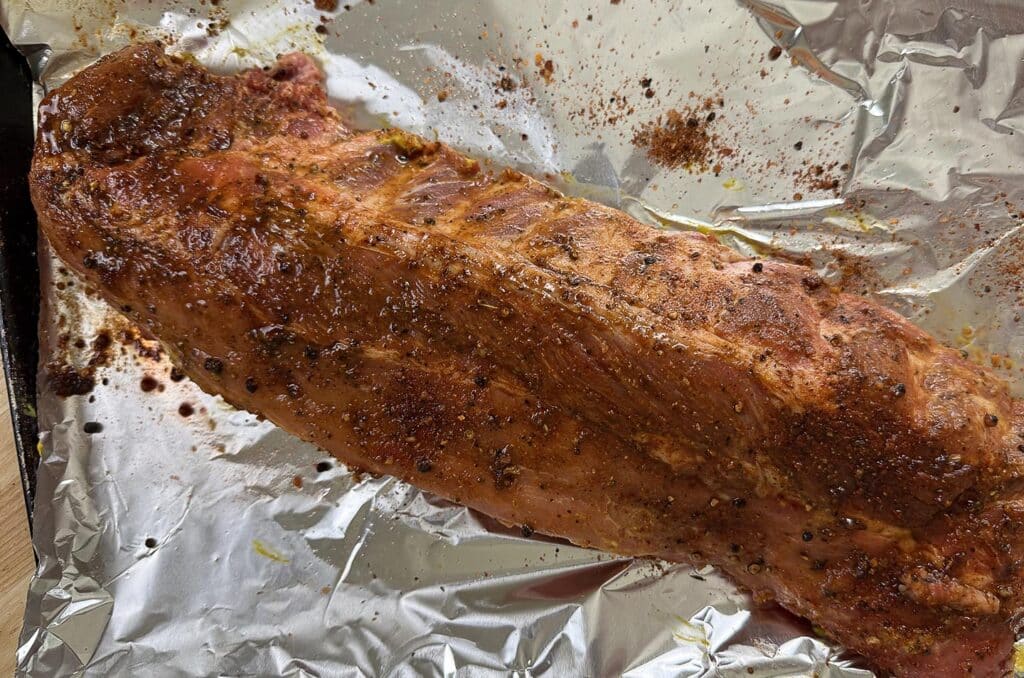
Here is a quick snapshot that fits the 3–2–1 timing at 225°F and includes the steps you asked for:
- Prep: Pat racks dry, remove the thin membrane from the bone side, then brush on a thin coat of yellow mustard as a binder. Apply your dry rub generously.
- 3 hours unwrapped at 225°F: Run a clean fire with apple wood chunks for light, steady smoke. Aim for thin blue smoke, not white billowy smoke.
- 2 hours wrapped at 225°F: Wrap each rack tightly in foil with a light splash of liquid if you like, such as apple juice. This stage braises the ribs and softens the connective tissue.
- 1 hour unwrapped at 225°F: Unwrap, brush with sauce if using, and return to the smoker to set the glaze and re-firm the bark.
Tip: Add most of your apple wood during the first three hours while the ribs are unwrapped. After you wrap, additional smoke would not reach the meat.
Are 321 Ribs Done At 225 Or 250?
You can cook 3–2–1 ribs at 225°F or 250°F. Both work, but the texture shifts slightly.
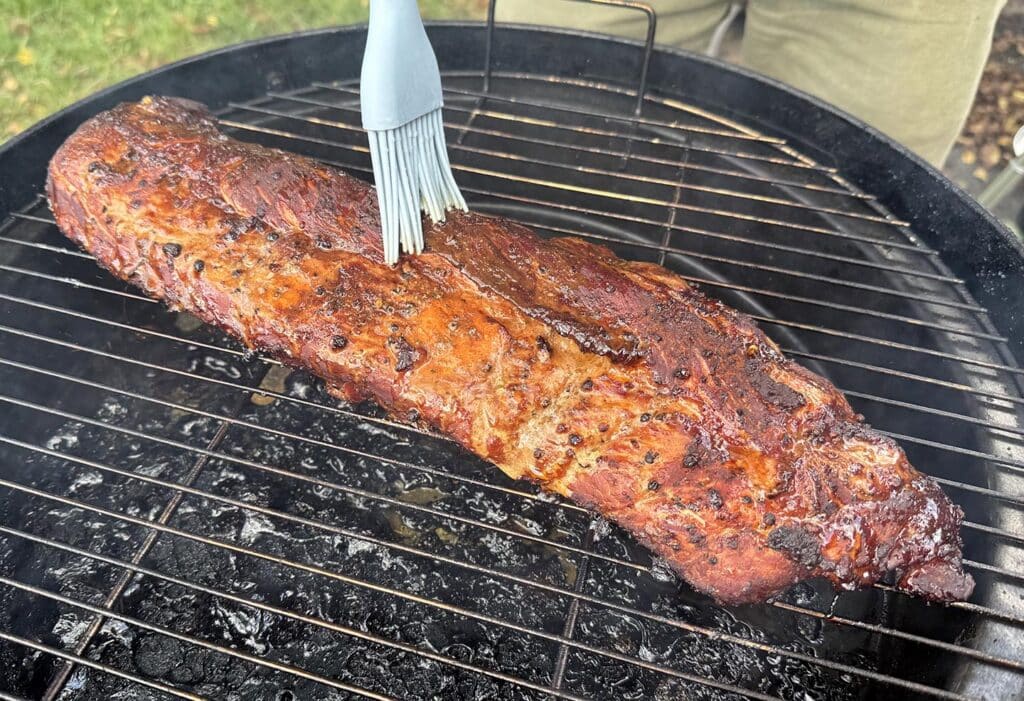
- 225°F: Gentler heat, deeper smoke penetration early, a softer bark, and a very tender bite. Time stays around six hours.
- 250°F: Slightly shorter total time and a firmer bark. The ribs will still reach a tender finish but with a touch more chew at the surface.
No matter the temp, rely on doneness cues, not just the clock. Look for bones peeking out about a quarter inch, meat that bends easily when lifted from the middle, and a toothpick or probe that slides between the bones with little resistance. Typical internal readings land near 195 to 203°F, but feel is more reliable with ribs.
Why Not Use The 3/2–1 Method For Ribs?
3–2–1 is forgiving and great for beginners, yet it can overcook baby backs if you prefer a classic competition bite. The long wrap stage steams the ribs, which can soften the bark and lead to meat that falls completely off the bone. Many cooks love that fall-apart texture. Others want a clean bite that leaves a small mark on the bone.
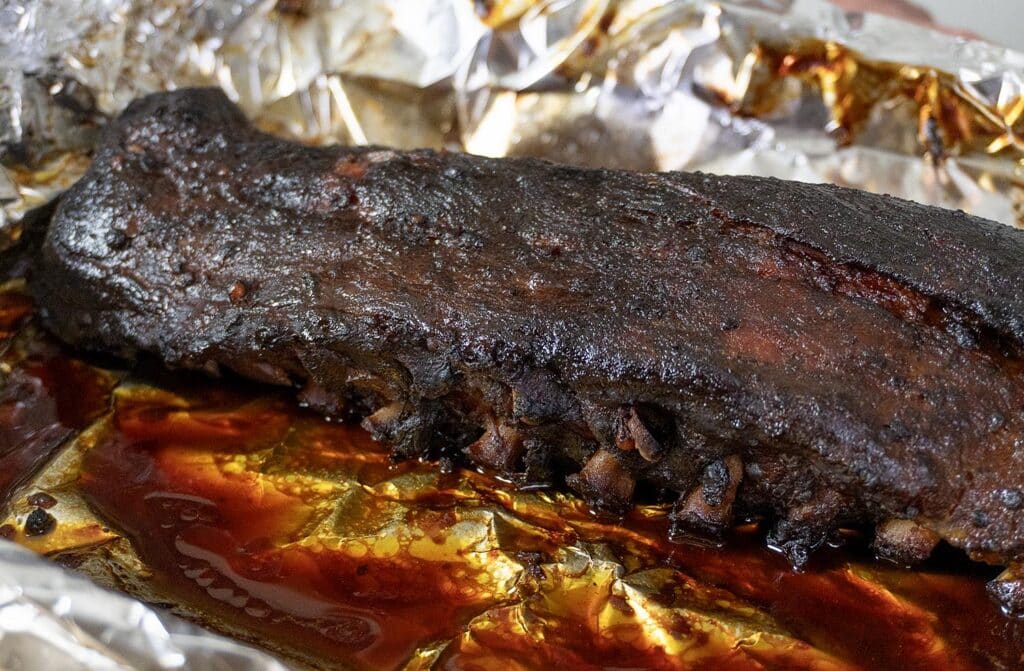
If you prefer a firmer bite on baby backs, try 2–2–1 or 2.5–1.5–0.5 at 225°F. The same prep applies, including membrane removal, yellow mustard as a binder, and apple wood for smoke. St. Louis cut spare ribs can handle the full 3–2–1 schedule better because they have more connective tissue and fat.
What Are Common Mistakes With The 3/2–1 Method?
Avoid these pitfalls to get consistent, crowd-pleasing results.
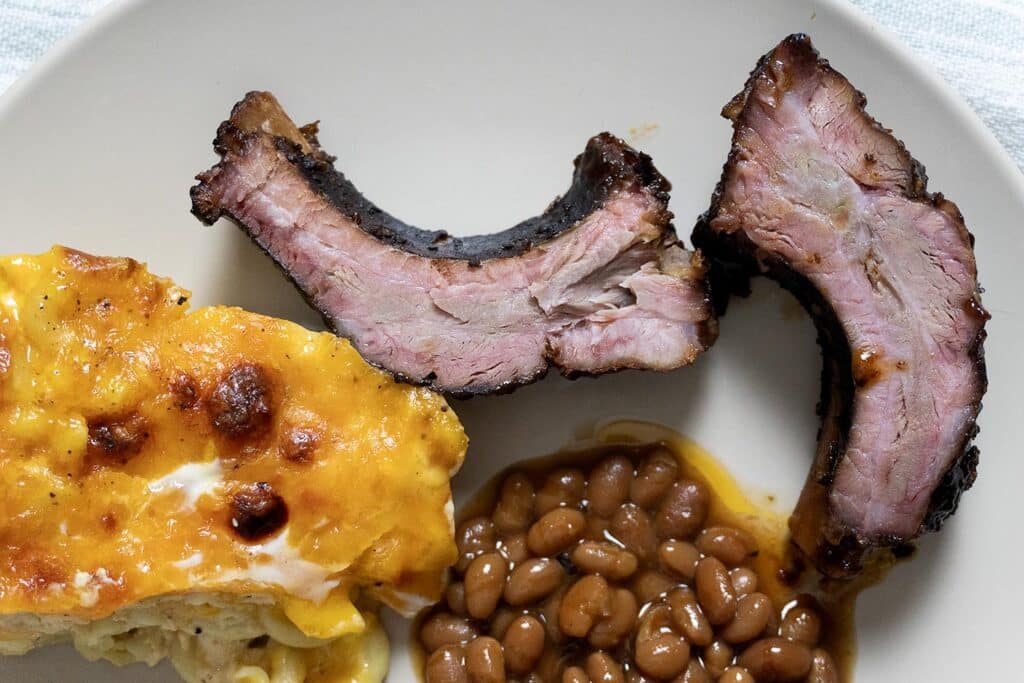
- Skipping membrane removal
The membrane blocks smoke contact and makes the bite chewy. Slide a spoon handle under a corner, grab with a paper towel, and pull it off in one sheet. - No binder or uneven rub
A thin swipe of yellow mustard helps the seasoning coat evenly and set into a good bark. Mustard taste disappears during the cook. - Too much white smoke
Overloading apple wood can cause harsh, bitter notes. Use a clean fire and add chunks gradually for thin blue smoke. - Wrapping with too much liquid
A heavy pour steams the bark into mush. Use a light splash or skip liquid entirely if you want more bark. - Running hot and cold
Big swings in pit temperature lead to dry edges and underdone centers. Keep 225 to 250°F steady. A water pan can help stabilize the cook. - Overcooking in the wrap
Two hours is a guideline. Start checking at 90 minutes. If ribs feel very soft at the bend, move to the final set stage early. - Saucing too early
Add sauce in the final hour so sugars do not burn. Brush, then let it set until tacky and glossy. - No rest
Rest ribs loosely tented for 10 to 15 minutes off the heat. This keeps juices from running out when you slice.
Storage Instructions
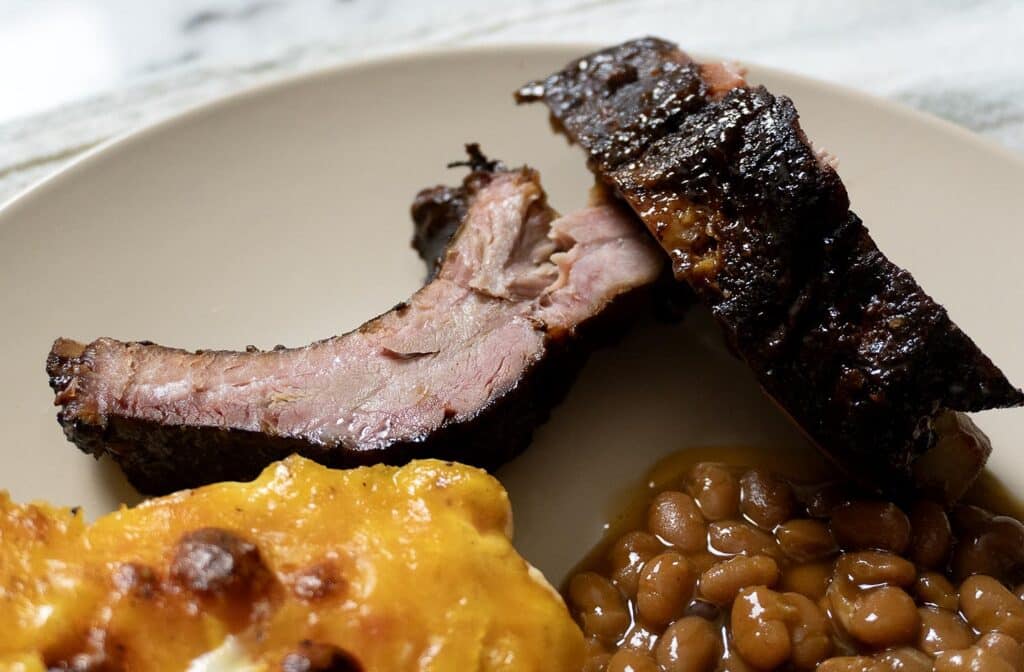
- Refrigerator: Cool ribs to room temp within 2 hours, then store in an airtight container for 3 to 4 days. Keep the sauce separate if you want to re-crisp the bark later.
- Reheating: Wrap ribs in foil with a tablespoon of apple juice and warm at 275°F until heated through, about 20 to 30 minutes. Unwrap for the last few minutes to re-set the bark. An air fryer at 325°F for a few minutes can also refresh the surface.
- Freezer: Wrap portions tightly in foil, then place in a freezer bag and freeze up to 2 months. Thaw overnight in the refrigerator before reheating.
- 1 rack of baby back ribs
- 2 Tbsp garlic powder
- 2 Tbsp onion powder
- 1/2 Tbsp paprika
- 1 Tbsp salt
- 1 Tbsp black pepper
- 1 cup apple juice
- 1/4 cup dark brown sugar
- 3 Tablespoons salted butter
- 1/2 cup BBQ Sauce of Your Choice
- Preheat. Light up your chimney with coals of your choice. Once those are hot enough, place the coals in your smoker with your wood of choice. For pork, we generally like a softer flavor, and use chunks of apple or cherry.
- Prep the ribs. Remove the membrane from the back of your ribs. Once this is removed add enough yellow mustard to the ribs to act as a binder for the dry spices. Coat the ribs with your dry seasonings thoroughly. Feel free to adjust this with less or more, depending on your tastes.
- Smoke for 3 hours. Place your ribs bone side down to make sure that the meat is getting exposed to as much smoke as possible.
- Wrap for 2 hours. After a 3-hour smoke, wrap the ribs tightly in foil with a braising liquid of your choice, for example apple cider, dark brown sugar, and butter. Cook at 225 to 250°F for 2 more hours. Look for noticeable pullback, with 1/4 to 1/2 inch of bone showing at the ends.
- Sauce and smoke for 1 hour. Brush the ribs with your favorite BBQ sauce, then return them to the smoker for 1 hour to finish cooking and set the sauce.
- Rest and serve. Remove the ribs from the smoker and rest for 10 to 15 minutes. Slice into individual ribs and serve. Set out extra sauce for anyone who likes theirs extra saucy.
